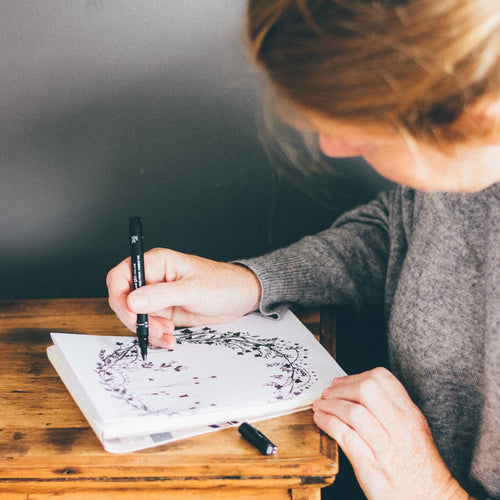Microplastics enter our bodies through what we eat, drink and what we breathe in.
Micro and nanoplastics leech from synthetic fibres such as nylon, polyester and acrylic when they're worn and washed, into the environment. They end up in landfill, in our water supplies, in the air, our food and most worryingly, in our bodies.
Other sources of environmental plastic waste include plastic bags, bottles and packaging in landfill, tiny plastic beads once used in cosmetics and toothpaste, tyre dust from vehicle wear and waste from other industrial processes.

Did You Know That The Amount of Micro Plastics in our Bodies is Increasing?
A recent study lead by Matthew Campen, pharmaceutical sciences professor at the University of Mexico was recently published in Nature Medicine. It found that human tissues analysed in 2024 had much higher levels of tiny plastic particles than samples from 2016 – roughly 0.5% of body weight.
The study looked at the brain, liver and kidney tissues and found concentrations of micro and nano plastics had increased by 50% in the last eight years. Concentrations of microplastics in the brain were between 7 and 30 times that seen in the liver and kidneys. Lower levels in the kidneys and liver might be because those organs have a biological role in clearing unwanted materials from the body, the researchers said.
Matthew Campden went on to explain that 99.5% of our brain is brain and the rest is plastic!
Microplastics have also been found in human blood (2022 study — Vrije Universiteit Amsterdam), in lung tissue from living people, in the human heart, the testes, the gastrointestinal trace and in human placentas (2020 study in Italy).
These increases are said to be mirroring the wider environmental build up and exposure of us all to plastics. “More than half of all plastic ever made has been made since 2002 and production is on track to double by 2040,” said Dr Philip Landrigan, director of the Program for Global Public Health and the Common Good at Boston College, who was not involved in the new study.
We have some pretty good indications that microplastics and nano plastics cause harm even though we are a long way from knowing the full extent of that hard”, Landrigan said. I would say we have enough information here that we need to start taking protective action”.
Things We Can Do to Reduce Microplastic Exposure
- Use less plastic, particularly clear food wrap and food and drink in plastic bottles
- Use natural fibres, clothing and textiles (cotton, linen and wool) which degrade over time
- Ventilate your home and clean to reduce dust build up
- Choose personal care products that don’t contain microplastics
- Support policies that reduce plastic waste like reusable cloth bags.

At Helen Round We Use Micro Plastic-free Textiles like Linen
Incorporating more natural fabrics into your life, like linen, has so many benefits. Made from the dried fibres of the flax plant, it needs minimal treatment to be turned into strong, durable fabric, that lasts a long time and doesn’t create any lasting environmental concerns.

It's low maintenance, breathable, durable and sustainable. It’s also so much better for our health, with some studies suggesting it has hypoallergenic and antibacterial properties that benefit skin and overall health.
This superstar natural textile is made into our bread bags, tea towels, make-up bags, cushions, lampshades and so much more!

We believe that fabric should be HEALTHY, NATURAL and GOOD FOR US!
For a full range of our products, click to our website here.
How could you reduce your plastic consumption? I’d love to hear your views on this important issue for us all.
If you have any questions or comments about this article, we'd love to hear from you and do please post pictures of your purchases on our social media pages. Find us on Facebook or Instagram.
To join our community and access all our free downloadable images and ideas, sign up to our newsletter here.
You'll also receive early notice of sales, new products, gift ideas, recipes, workshops, and events! So don't hesitate to sign up. Click here.



Leave a comment